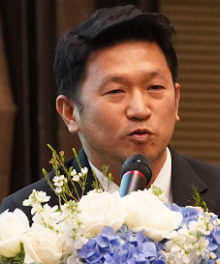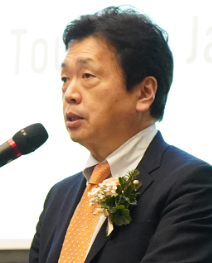JTTRI-AIRO Opening Commemorative Symposium
Shifting Tourism for the Post-Pandemic Era ~How should Thailand and Japan work towards Quality Tourism?~
- Symposium etc.
- Tourism
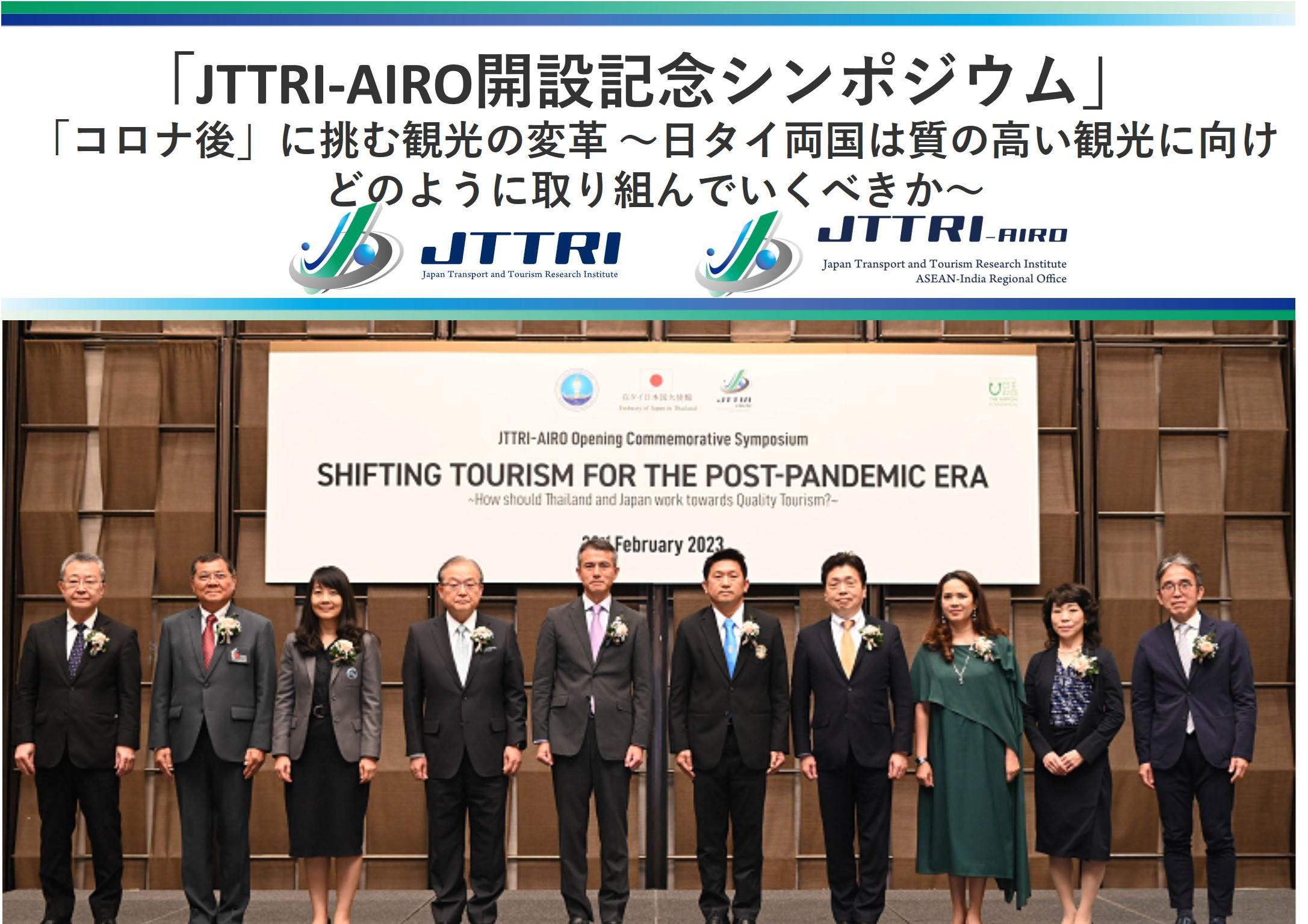

| Organizer | Japan Transport and Tourism Research Institute ASEAN-India Regional Office |
|---|---|
| Date / Time | Wed, Feb 22,2023 |
| Theme | 【Opening Remarks】 Mr. SHUKURI Masafumi Chairman, Japan Transport and Tourism Research Institute (JTTRI) 【Greetings from Guest of Honor】 H.E. Mr. Phiphat RATCHAKITPRAKARN Minister of Tourism and Sports, Thailand Mr. OBA Yuichi Deputy Chief of Mission and Minister, Embassy of Japan in Thailand 【Special Lecture】 Mr. Mongkon WIMONRAT Assistant Permanent Secretary, Ministry of Tourism and Sports (MOTS), Thailand Mr. MIZUSHIMA Satoru Vice-Minister for International Affairs, Ministry of Land, Infrastructure, Transport and Tourism, Japan 【Panel Discussion】 〔Moderator〕 Dr. Jutamas WISANSING Assistant professor in Tourism Management, Managing Director of Perfect Link Consulting Group 〔Panelist〕 Ms. Pattaraanong NA CHIANGMAI Executive Director for the Northern Region, Tourism Authority of Thailand (TAT) Mr. Suthiphong PHEUNPHIPHOP Vice President of Tourism Council of Thailand (TCT) Ms. NAKAYAMA Rieko Executive Vice President, Japan National Tourism Organization (JNTO) Mr. SAWANOBORI Tsuguhiko Manager of Jalan Research Center, Recruit Company Limited 【Closing Remarks】 Mr. OKUDA Tetsuya President of ASEAN-India Regional Office, JTTRI ※Program※ |
Event Summary
As tourism, which has been severely affected by the COVID-19 pandemic, is showing signs of revival, we will discuss how COVID-19 has changed tourists’ needs and what tourism stakeholders in Thailand and Japan should do in the future based on these changes. This symposium aims to promote Quality Tourism by sharing insights on sustainability-conscious measures described in the “Five-Year Joint Action Plan on Japan–Thailand Strategic Economic Partnership”. Correspondingly, it is expected to foster mutual understanding between Thailand and Japan.
Program of the seminar is as the following
| Opening Remarks |
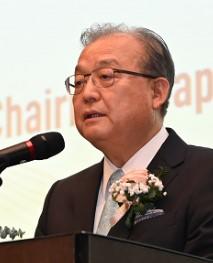
Mr. SHUKURI Masafumi Opening Remarks |
|---|---|
| Greetings from Guest of Honor |
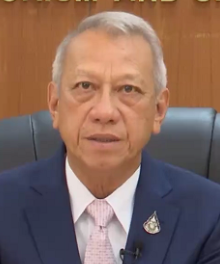
H.E. Mr. Phiphat RATCHAKITPRAKARN |
| Greetings from Guest of Honor |
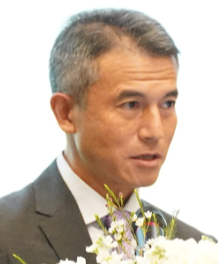
Mr. OBA Yuichi |
| Special Lecture | |
| Special Lecture | |
| Panel Discussion |
〔Moderator〕
Dr. Jutamas WISANSING Assistant professor in Tourism Management, Managing Director of Perfect Link Consulting Group  bio 〔Panelist〕 Ms. Pattaraanong NA CHIANGMAI Executive Director for the Northern Region, Tourism Authority of Thailand (TAT) 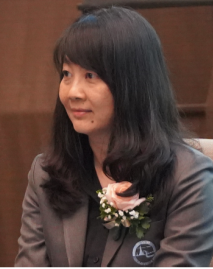 bio file Mr. Suthiphong PHEUNPHIPHOP Vice President of Tourism Council of Thailand (TCT) 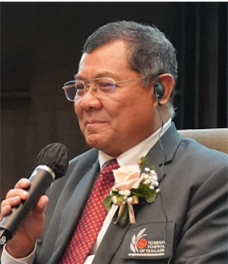 bio Ms. NAKAYAMA Rieko Executive Vice President, Japan National Tourism Organization (JNTO) 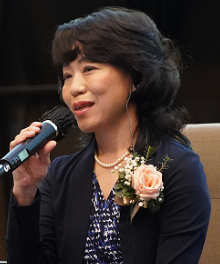 bio file Mr. SAWANOBORI Tsuguhiko Manager of Jalan Research Center, Recruit Company Limited 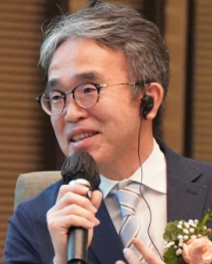 bio file |
| Closing Remarks |
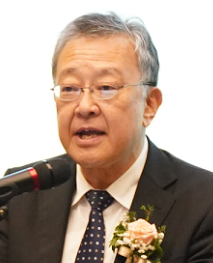
Mr. OKUDA Tetsuya |
Outline of the seminar
1. Greetings from Guests of Honor(1) H.E. Mr. Phiphat RATCHAKITPRAKARN
Minister of Tourism and Sports, Thailand
The tourism industry has been hit hard by the pandemic, but, in the midst of this uncertainty, we saw an opportunity to restore tourism industry to a stronger footing and we must take advantage of this period to respond to changes in the world, create sustainable tourism, and aim for high quality tourism.
The pandemic has surfaced a number of issues pertaining to tourism, for example the problem associated with a concentration of industry development, the lack of integration in sustainable growth, and emphasis on quantity over quality. Therefore, Thailand’s goals for 2023 are not only to recover the tourism industry to the pre-Covid level, but also to develop tourism as a whole and, in particular, to oversee and manage the entire supply chain. This effort covers economic, social, cultural, and environmental aspects. It is also important to focus on strengthening cooperation between the public and private sectors. At local population level, we would like to ensure fairness in development and coexistence with the local population.
We are trying to improve the level of our tourism infrastructure and network by using new technologies, innovations, and other tools. We hope to raise the level of safety and security in Thailand, so that foreign tourists visiting Thailand will have a fulfilling, enjoyable and worthwhile experience during their time in Thailand. From now on, tourism in Thailand will aim for development and strive for responsible tourism that takes into consideration a sustainable tourism environment. We’ll promote a tourism industry that takes the environment into consideration. I would like to make it clear that we are aiming for a carbon neutral society in 2050. It is my wish that today’s symposium be successful and strengthen relations between Japan and Thailand.
(2) Mr. OBA Yuichi
Deputy Chief of Mission and Minister (Economic Affairs), Embassy of Japan in Thailand
At the Japan-Thailand Foreign Ministers meeting in November of last year, the Foreign Ministers of the two countries signed the Five-Year Joint Action Plan on Japan-Thailand Strategic Economic Partnership, which sets the direction for cooperation between the two countries in the economic field for the next five years.
Today’s symposium aims to share knowledge on high-quality tourism to resolve issues through discussion among experts from both Japan and Thailand, which is a very significant initiative in line with the Five-Year Plan. In 2019, the number of tourists visiting Japan from Thailand was about 1.3 million per year, while the number of tourists visiting Thailand from Japan was about 1.8 million. Unfortunately, the number of tourists between the two countries dropped significantly due to the pandemic, but it is now on the road to recovery. Last year in 2022, people exchange between the two countries recovered to about 400,000 in both directions. This year, we expect a significant increase in the number of visitors. On the other hand, there are some bottlenecks, such as rising flight and hotel prices which make it difficult to make reservations, and a shortage of manpower in the tourism industry.
Recently, thanks to the efforts of airline companies, the number of flights is on the increase. I am confident that this year will be a year of revival for the tourism industry.
2. Special Lecture
(1) Mr. Mongkon WIMONRAT
Assistant Permanent Secretary, Ministry of Tourism and Sports (MOTS), Thailand
In 2019, the tourism component of Thailand’s GDP was 17.8%. The number of people employed in the tourism sector was about 4.4 million, which amounts to 11.6% of total employment. In 2020, the tourism industry was hit hard, leading to a decrease of 83.2% in the number of foreign tourist arrivals and a decrease of 70.1% in tourists’ expenditures.
The challenges that Thailand’s tourism currently faces include an imbalance in tourism revenues throughout the country, problems with transportation infrastructure connections, economic crises at home and abroad, outdated legislation for stimulating the tourist industry, and an unsustainable situation not taking into account the acceptable capacity of waste and resources. Thailand’s Third National Tourism Development Plan (2023~) comprises four strategies: strengthening and balancing, upgrading the infrastructure, standards and connectivity, delivering a traveler-centered experience, and sustainable growth and immunity.
Our vision is centered around three key pillars---resilience, sustainability and inclusive growth---in order to rebuild a high-value tourism industry. More specifically, our vision is to create a high-value economy (increase tourists’ expenditures, increase value in tourism products and services with the support of technology and innovation, less dependency on inbound tourists, and up-skill and re-skill tourism workers), high-value society (expand participation and collaboration between private and public sector as well as locals, highlight and promote Thai identity, and inclusive distribution of the benefits of tourism), and high-value environment (add more value to the natural and environmental capital in the tourism sector and mitigate the impacts of climate change).
(2) Mr. MIZUSHIMA Satoru
Vice-Minister for International Affairs, Ministry of Land, Infrastructure, Transport and Tourism, Japan
With regard to the number of inbound tourists, Thailand started to open up its borders to accept inbound tourists earlier than Japan did. Japan has much to learn from Thailand in terms of accepting foreign visitors. Japan and Thailand are very important tourism partners for each other and an event that happened back in November of last year symbolizes this important relationship. In November of last year, Prime Minister Kishida visited Bangkok and held the Japan-Thailand Tourism Seminar. This event and other good stories illustrate the tourism relationship between Japan and Thailand.
Covid-19 caused a substantial decrease in the number of visitors and this significantly damaged the accommodation and travel businesses. The government has continued to provide assistance in the form of financing and employment adjustment subsidies. In addition, the pandemic also produced a shift in the interests and preferences of foreign travelers visiting Japan. The results of a survey show that foreign travelers are showing an interest in outdoor activities and sustainable tourism.
In light of these changes, Japan’s tourism policy is taking a new direction as consideration is currently being given to formulating the Master Plan for the Promotion of Tourism Nation, which targets the period of time through 2025. In addition to challenges that have existed since prior to the pandemic, changes due to the pandemic have been taken into account with the aim of reviving tourism in a sustainable manner. Japan’s tourism policy will promote three strategies: strategies for creating high-value added and sustainable tourism regions, inbound recovery strategies, and strategies for expanding domestic travel.
3. Panel Discussion
[Moderator]
Dr. Jutamas WISANSING, Assistant professor in Tourism Management and Managing Director of Perfect Link Consulting Group
[Panelists]
Ms. Pattaraanong NA CHIANGMAI, Executive Director for the Northern Region, Tourism Authority of Thailand (TAT)
Mr. Suthiphong PHEUNPHIPHOP, Vice President, Tourism Council of Thailand (TCT)
Ms. NAKAYAMA Rieko, Executive Vice President, Japan National Tourism Organization (JNTO)
Mr. SAWANOBORI Tsuguhiko, Manager of Jalan Research Center, Recruit Company Limited
Ms. Pattaraanong NA CHIANGMAI, TAT Executive Director for the Northern Region: “Thai policies for attracting visitors to secondary cities”
Tourism accounts for 18% of Thailand’s GDP. However, the problem is that 90% tourism income is concentrated in major cities and secondary cities get only 10% of the total. So, the government is actively working to attract tourists to secondary cities and regions.
Beginning in 2015, the Tourism Authority of Thailand started running a campaign called the “12 Cities That Can’t Miss.” The 12 cities were selected based upon their capacity to receive tourists as well as the degree to which they are recognized. The focus was on promoting these 12 cities to Thai tourists. However, Thai tourists as well as foreign tourists were very impressed with the campaign. So, 12 more cities were added in 2016 and 2017, and then the list was expanded to 55 cities in 2018. The government’s policy has been to provide financial support to those cities and work with public institutions and local residents to promote these 55 cities.
The important thing in the promotion of secondary cities is to make sure they have the capacity to accommodate tourism. For example, tourists may only visit these cities during the high season. There is also the risk of destruction of nature if the number of tourists increases to a level that they are no longer able to accommodate. Therefore, the secondary cities have also cooperated in the promotion with TAT. This promotion has increased the income ratio of large cities to secondary cities from 90:10 to 85:15 over the past few years.
In addition, one strategy for promoting tourism has been a campaign that promotes experiences rather than products to tourists. Thailand is divided into five major regions and we have launched campaigns that promote the different appeals of each region.
Ms. NAKAYAMA Rieko, JNTO Executive Vice President: “Best practices for using local culture and other assets for a high value-added appeal to attract visitors to local areas”
The current direction is to increase the appeal and value of the regions by attracting tourists to regional areas through campaigns that provide enjoyable experiences there. The first of these is nature. One initiative is to provide programs that allow visitors to experience the rich nature. For example, in snow-covered regions, of course skiing and snowboarding are very enjoyable, but we are trying to increase the number of activities that allow people to enjoy the snow in a more casual way, such as fishing for Japanese smelt near Mount Akagi. Another example is food. In areas were fruit cultivation flourishes, there are many tourist farms where you can pick your own fruits and eat them fresh on the spot. In addition, there are also onsen hot springs throughout Japan where you can experience Japanese nature and a variety of different scenery. You can stay at a ryokan or Japanese-style inn near the onsen hot springs, wear a yukata, eat Japanese food, drink Japanese sake, and experience Japanese lifestyle and culture.
We also offer programs to experience Japanese traditions. For example, more and more people have started to visit traditional buildings in rural areas of Japan. These include private homes, merchant houses, workshops, temples, etc. There is a movement to renovate and utilize these buildings as lodgings. This slide shows an interesting program where a former soy sauce storage facility has been renovated into a lodging facility where you can not only stay, but actually taste the different kinds of soy sauce, which are made here, and take part in the experience of making soy sauce. In addition, the Kumanokodo pilgrimage trail is also popular with visitors. There is a program where visitors can experience wearing the clothing of aristocrat class of 1000 years ago and walk along the pilgrimage path. At JNTO, we introduce a number of such experience-based programs that can be enjoyed in each region on a website under the name “Experiences in Japan.”
Most recently, JNTO has been working to add even more value-added by providing exclusive personalized experiences. Three such examples are: (1) private porcelain-making lessons provided by a descendent of Lee Sanpei, who discovered Arita-yaki (white porcelain ore); (2) helicopter ride rental to view Mount Fuji up close; and (3) castle experience where guests stay as the lord for a day at a real castle.
By providing visitors with the opportunity to experience nature, traditional facilities, and history that Japan has long cherished, we are trying to realize higher value-added tourism program. This will, of course, increase the satisfaction of guests, but it will also bring an economic benefit to the region. We are aiming to create a virtuous cycle by putting such profits into new investments or using them to maintain the castle and other aspects of the natural environment.
Mr. Suthiphong PHEUNPHIPHOP, TCT Vice President: “How the tourism industry should work to attract visitors to local areas”
It is not just the Ministry of Tourism & Sports that is involved in the tourism sector, but also the Tourism Authority of Thailand (TAT), Ministry of Culture, Ministry of Interior, Ministry of Natural Resources and Environment, Ministry of Transport, and other government institutions.
As Assistant Permanent Secretary Mongkon WIMONRAT said during his special lecture, the pandemic reduced tourist expenditures and caused a severe drop in the number of tourist arrivals. The Thai tourism industry, in particular, is quite dependent on inbound tourism, which accounts for more than 50% of its income. It is for this reason that Japan, as well as Taiwan and China, which has built up a solid domestic tourism sector, was able to mitigate the impact of the pandemic, but Thailand suffered a severe blow. I think we can say that having watched how foreign tourists were unable to enter Thailand and income to seven major cities evaporated, private companies shifted toward promoting domestic tourism.
In fact, it was the secondary cities that recovered earlier from the pandemic. Nakhon Si Thammarat province in the South gained tremendous income from faith tourism visitors. In the northeastern region, the local popularity of the famous End of the Buddhist Lent Festival & Naga Fireball Phenomenon increased quickly. The TCT has recommended to Thai tourism operators to use a strategy of domestic travel and tours that appeal to the interests and preferences of a variety of Thai tourists. This has resulted in a rebound in Thai domestic tourism after the pandemic.
The three-year pandemic also helped nature to recover (it is not an overstatement to say that tourism is one of the causes of the destruction of this resource). With the recovery of nature, TCT, as a representative of private companies, has worked with the government and requested consideration be given to restricting access to tourist destinations. I believe this will lead to sustainable tourism. The government also is working with the private sector and communities.
With regard to high-value added, the project known as “One Tambon One Product (One Village One Product) was created from a business trip to Oita Prefecture by the Thai government. TCT and government institutions have cooperated to conduct research on how to improve the appeal of local specialty products.
Mr. SAWANOBORI Tsuguhiko, Manager of Recruit’s Jalan Research Center: “Methods for creating high-value added tourism and techniques for attracting visitors to regional areas”
The first key to successfully attracting tourists to countryside areas is to clarify the value unique to the area. In doing this, it is important to focus on the combination of the cultural resources unique to that area, which include historical, traditional, natural and food cultural resources.
The second is important thing for increasing the attractiveness of the area to create a high value-added strategy. It is important this strategy be premised on: (1) local people understanding the importance of their cultural resources, and (2) presenting an appeal that makes use of a combination of the cultural resources. The creation of routes increases the time that visitors will stay in the area and the units of consumption.
The third point is to attract visitors to countryside areas. Today, digital marketing is important. The key is to use touch points to lead people to a landing page that provides them with additional information, builds an emotional connection, and then calls for action encouraging them to make a reservation. Also, we need to narrow down the target audience and clearly present the points that will impress them to the media and travel agencies, which have the ability to reach the target audience. Furthermore, in Japan, there are many people who go to the countryside after getting information on their travel destinations, so providing information and making recommendations at points of contact at airports and accommodation facilities is an important first step in getting guests to visit an area and a powerful means that will also lead them to make the destination part of their itinerary next time.
I would like to present the five points that I personally think are important for creating even higher value added.
(1) Narrow down the target market because I believe the narrower the target market, the more the market expands. The reason for this is that it is easier to get inside the target market. High-value added means adding more and more points that can impress people. If you go into a really niche market and make a breakthrough there, it will surely spread to the surrounding areas.
(2) It is important to continue to do PDCA. Continuing to make improvements will produce a difference.
(3) Incorporate advice from relevant parties from target countries. For example, if you want to have Thai people come to your target area, then it is very important to have a Thai person in your organization and interact with them because they have the true viewpoint of Thai people.
(4) While it is important to make content attractive, the degree of high-value added depends on the ability to communicate and express that content. Japan is still weak in the area of professional guides. Outstanding guides, who are in high demand for reservations at a high price, are very knowledgeable not only about their specialty, but also the history and culture of the area. They also have very high communication skills. The ability to read expectations is essential for creating even higher value.
(5) The fifth point is sustainability. How the story is communicated is important, such as, for example, elementary school children experiencing the importance of their local history and culture in class and preserving that for generations will lead to increasing the value of the area. Just having communities themselves maintain their environment brings higher value.
Ms. Pattaraanong NA CHIANGMAI, TAT Executive Director for the Northern Region: “Areas of Japan-Thailand collaboration for sustainable tourism and attracting visitors to regional areas”
I believe the exchange of influencers is one method of collaboration. If Thai influencers visit Japan, they know what kind of food Thai people like and what things they want to buy, and this should show another direction different from that which Japan wants to provide. Conversely, when Japanese influencers travel to Thailand, they can show us the sort of Thai goods Japanese people like and what sort of tourist spots are popular among the Japanese.
I think it would be good if experiences were exchanged and shared as this would help resolve issues in our travel policies. Japan is very good at creating high-value. I think that Japan’s ability to sell fruits at a high price is a result of its ability to create high-value, so I would hope that Japan would teach that technique to Thailand. Japan is also really good at in-depth research. There are also experiences where AI recommends drinks in vending machines and the information gained from research has also been put to use in marketing. I even think that the promotion of sustainable tourism is something that is embedded in the DNA of Japanese people.
Ms. NAKAYAMA Rieko, JNTO Executive Vice President
Today, we heard about knowing your customers and their needs, and clarifying the target market that you want to attract to regional areas even in Japan, and one of those target markets is the Thai people. There are many repeaters among Thai visitors to Japan and I believe there is a higher possibility that they will visit a regional area when they come for the second or third time.
Regional areas have many unique attractions, so we are still in the trial-and-error stage of finding out what Thai people really like. Although it is a classical method, we would like to have Thai travel agencies and tourism professionals take a look at different destinations. They can advise us on what Thai people like or tell us that they are interested in something that we have never noticed. We would like to have Thai tourism professionals visit regions that are not necessarily visited by Thai people and introduce them to Thai people, so we can learn from them. On the other hand, if Thai travel agencies and tourism professionals are facing a great challenge in attracting visitors to their destinations, it would be a great idea to invite Japanese tourism professionals to visit the regions and organize study tours. This would be a great opportunity to conduct research on what is attractive from the Japanese point of view. I think we can learn a lot from each other.
Mr. Suthiphong PHEUNPHIPHOP, TCT Vice President
The Thai government is seeking to promote soft power, and I think it would be good if we were able to cooperate on the production of movies, dramas, and music because the Japanese entertainment industry also has significant influence in Thailand.
I would also like us to cooperate on digitalizing the tourism business. This is because there were many businesses that were unable to switch from analog to digital and thus not able to survive the pandemic.
Mr. SAWANOBORI Tsuguhiko, Manager of Recruit’s Jalan Research Center
We shared the importance of high-value added and our countries share a mutual respect for each other, so we should not stop at high-value added. Beyond high-value added, there must be high satisfaction, and then it is possible to increase the unit price. Increasing the unit price will increase the operator’s revenue. That will then be shared with the employees in the form of a better working environment and greater revenue. The compensation for employees will increase, the turnover ratio will go down, and eventually the industry will become a dream job. High-quality employees will lead to high-value added, so this will create a virtuous cycle and lead to sustainability. Of course, this is not easy, so an important topic is that we continue to cooperate and consider this issue by both Thailand and Japan.
JTTRI-AIRO assumed responsibility for preparing this summary of the symposium.



